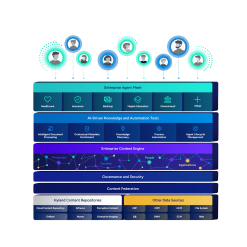Driving factors for cloud transitions
Despite these obstacles, according to research by Aite-Novarica Group, by the beginning of 2022 the percentage of insurers using cloud has risen to more than 90%, and there is more to come. Nearly three-quarters of insurers plan to expand their use of cloud computing in the next 18 months.
The factors driving this increase in cloud adoption include:
Core application ecosystems
As insurers expand the core functionality with an ecosystem, they will need cloud API gateways that manage the interfaces between core applications and third-party solutions.
Getting out of the data center business
Cloud provides nearly limitless capacity for storing data. Plus, it provides massive computing power to run applications and execute complex tasks.
Data lake houses
The amount of data insurers collect and store daily continues to increase, especially unstructured data such as digital images and videos. Cloud provides insurers with the ability to store and process large volumes of data without a predetermined structure.
Artificial intelligence (ai) and machine learning
Cloud providers are introducing new services and capabilities to analyze and derive value from the growing volumes and variety of available data.
Emerging technologies
Cloud is not simply an infrastructure initiative. Cloud can help insurers future-proof their IT investments by providing them with the platform to take advantage of emerging technologies from AI to quantum computing.











